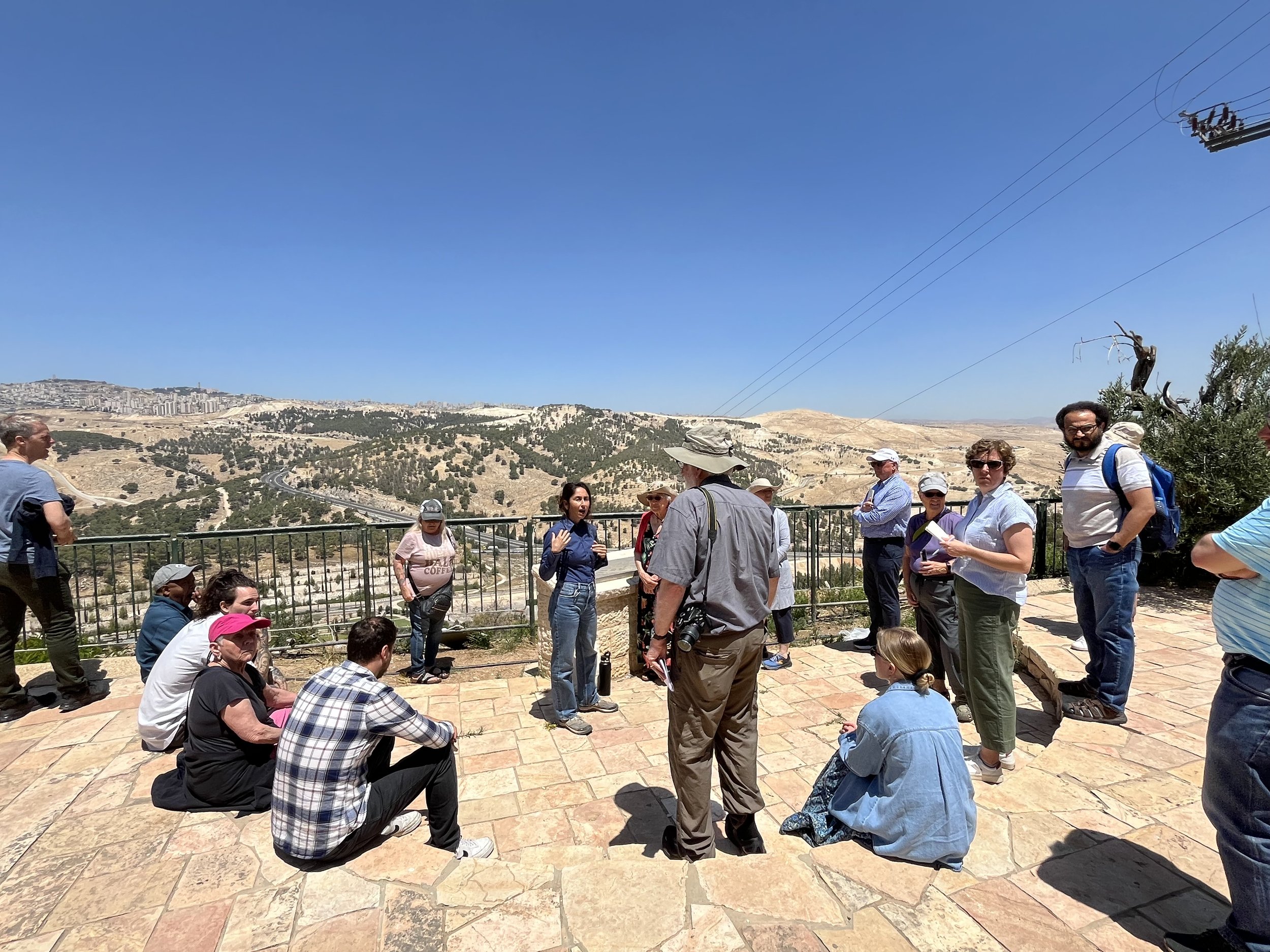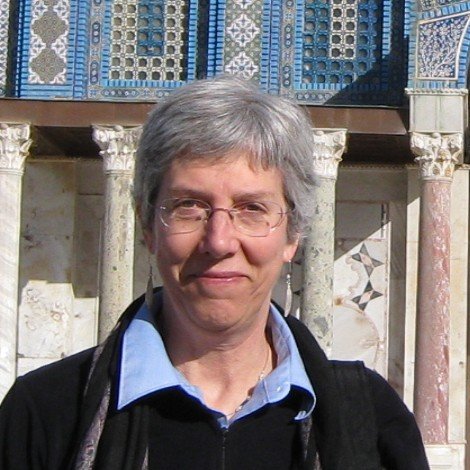Pilgrims, Not Tourists
Come and See, Go and Tell Reflection #2
By, Rev. Joan Deming
Our IPMN Solidarity Witness group came to Israel/Palestine to have our hearts and minds stretched – to be pilgrims, not simply tourists. We have "Come to See" so we can "Go and Tell" the unreported stories we are immersing ourselves in. Most of us came because we felt we had to be here, despite the misgivings of at least some family or friends. What we are experiencing is a grateful welcome from everyone we meet. We appear to be the only guests in our Jerusalem hotel. The streets around us are full of locals but almost no tourists. The halls of the souk in the Old City were almost empty this afternoon as we enjoyed a free hour exploring. Although this land – and Gaza in particular – are more troubled than anyone here can remember, we travel here as privileged and much-appreciated guests.
Our group of 18 is being guided by Samuel, Sevan, and Omar from the Sabeel Jerusalem staff and several local experts. Our first full day of touring filled us with more information and feelings than we can quickly process. We began with a half-day tour of East Jerusalem guided by Chaska from the Israeli Committee Against House Demolitions, unpacking the effect of Israel’s Occupation on the Palestinians who historically belong to this land. From key overlook points, and sharing maps developed by both ICAHD and OCHA (the UN Office for the Coordination of Humanitarian Affairs), Chaska helped us see how Israel’s settlement project has created “facts on the ground” that press the local Palestinian population into smaller and smaller spaces, control their movement, and limit their rights to aspects of life we take for granted like abundant water, work and building permits, and even the right to live with family members.
The end of our ICAHD tour took us into the settlement of Ma’ale Adumim, which is considered by Israelis to be part of greater Jerusalem despite being separated by miles of hills from Jerusalem proper. We stood on a high-up overlook, with beautiful houses, green grass, and gardens above, below, and around us. Looking out, the vastness of the desert stretched to the north and east, beautiful and stark. What shocked me as we took in the panorama of East Jerusalem hills and desert was an artificial lake below us in a large park, spouting numerous fountains. A quick google search reveals that one can rent paddleboats to play on the lake and families can swim or sit lake-side in the shade.
I joined this tour immediately after 12 days of volunteering at the Tent of Nations farm in the West Bank near Bethlehem, where the only available water comes from cisterns because Israel does not allow the farm to be hooked up to public water or utilities. Unlike the five illegal Israeli settlements surrounding the farm, which have running water, gardens and even swimming pools, the farm and most of the West Bank as a whole suffer from a constant water crisis thanks to Israeli water policies. Seeing the Ma’ale Adumim lake in the midst of the desert felt to me a little like a poke in the eye with a sharp stick.
After a delicious Palestinian feast at the Jerusalem Hotel, we met in the Old City with Bishop Munib Younan, Bishop Emeritus of the Evangelical Lutheran Church in Jordan and the Holy Land. He was on fire as he spoke about the frustration of talking with influencers (specifically in OUR government and churches) who refuse to use their voice and clout to call for ceasefire in Gaza and an end to the Occupation. He named the Gaza crisis as genocide and urged us to call it that, but also cautioned us to call out Israel’s 76+ years of ethnic cleansing that is slowly leading to a genocidal conclusion in the West Bank as well. "You are my sisters and brothers," he said to us. "You have to speak on my behalf. It's Christ's call for you. Work for justice!!"
A free hour allowed us to unwind for a bit and decompress. At 6pm we walked to the Armenian Quarter to meet with SAVE the ARQ, an initiative that aims to create awareness of the significant religious, cultural, and historical presence of Armenians in Jerusalem and to encourage the revitalization of the Armenian Quarter in the Old City. Meeting with them in a protest encampment on land owned by the Armenian Church, we learned that this is the last large open space in the Old City, and that Armenian ownership is seriously threatened due to a fraudulent business deal more complicated than I could take in at the end of a long day. The bottom line is clear, though: keeping this land in Armenian hands is essential to preserving the diversity and historical integrity of the whole Old City of Jerusalem.
We ended our first day with a mix of feelings and insights, shared in a debriefing time before calling it a day. This “Come and See, Go and Tell” tour will stretch our understanding of Israel/Palestine, our own country, and indeed ourselves. What a great start!
Rev. Joan Deming
Joan Deming, married to Don Schultz, mom of 2 daughters and grandmother to 2 amazing preschoolers. I live in Minneapolis, MN near one daughter and her family, but lived most of my life in Wisconsin. I am a retired United Methodist pastor, a member of the Wisconsin Conference. I split my career between local church ministry (28 years) and nonprofit leadership (15 years), with the last 10 years before retirement focused on support for Palestinian Christians and leading groups to visit Israel/Palestine. I worked for Pilgrims of Ibillin, supporting the work of Abuna Elias Chacour at his schools in Ibillin plus other peace-building organizations in Israel and the West Bank. My ongoing partner in leading trips has been Wi'am Center for Conflict Transformation in Bethlehem, and I have continued to work with their leadership to lead Living Stones pilgrimages after retirement. My hobbies include gardening, hiking, quilting, knitting, and anything my grandchildren want to do.



